Diabetes affects more than 37 million people in the U.S. and increases their risk of early death by 60%.1 Numerous clinical studies show that the maintenance of glycated hemoglobin (HbA1c) at about 7% prevents complications, slows the disease progression, and prevents premature death.
Despite advances in pharmacotherapy, most patients with long-standing type 2 diabetes progress to overt insulin deficiency and require insulin injections. Insulin is the only drug for diabetes that does not have an upper dose limit and there is no glucose level that it cannot reduce. It has only one considerable side effect which is hypoglycemia. Yet despite decades of advances in insulin formulations and glucose monitoring technology, more than two-thirds of the 10 million Americans who take insulin do not achieve their target HbA1c levels – the key outcome metric in diabetes care.2 And when these goals are not met, people with diabetes are at higher risk of serious health problems, including blindness, kidney failure, loss of lower extremities, heart disease, stroke and premature death.
Why does such a potentially efficacious therapy have such poor outcomes? The reason lies not in the medicine but in how it is used. More precisely, the standard of care for insulin therapy does not adequately address the root cause of most therapeutic failures, i.e., that the amount of insulin people with diabetes receive is not adjusted or titrated with enough frequency to meet their perpetual changes in insulin needs. Although an individual’s requirements constantly (and often dramatically) change, physicians only alter the insulin dosages during a patient visit, which typically occurs once every 3-6 months. As a result, patients’ glucose levels are largely too high, too low or both. Simply put, the most important factor in optimizing the efficacy and safety of insulin therapy is the frequency of dose adjustments.
This white paper will briefly explain why autonomous insulin titration (dose adjustments) significantly improves the management of long-standing type 2 diabetes and will explore its implications for patients, providers and payers. It also will show how the FDA-cleared d-Nav® innovative technology facilitates frequent insulin titrations to help patients lower their glucose levels without increasing the incidents of excessive hypoglycemia.
Studies show that two-thirds of people who use insulin do not achieve the recommended HbA1c goal of <7% and one-third have an HbA1c of 9% or higher.2
Real-World Barriers to Glucose Control
Numerous clinical studies show that when patients achieve and maintain their HbA1c goals – the metric used to demonstrate glycemic control – they can prevent complications and premature death.3 In the real world, however, most patients who require insulin therapy do not achieve these therapy goals, which the American Diabetes Association recommends as an HbA1c of <7% for nonpregnant adults.4 In fact, the average HbA1c of insulin users in the Western world is about 8.5%.5
The reason for insulin therapy failure relies on the use of the drug rather than the drug itself. The physiological requirements of the insulin hormone change considerably over time and never reach a steady state. Individuals without diabetes are not aware of this because their own pancreas modifies its insulin output seamlessly. Once a patient becomes insulin deficient because of their diabetes and starts injecting insulin, healthy glucose levels can only be maintained if the continual changes in insulin needs are mitigated by constant dose adjustments. In fact, in patients who inject insulin for type 2 diabetes, adjustments in insulin doses are needed at least weekly.6 Simply stated, insulin is likely the most dynamic drug existing in modern medicine. The dramatic, unpredictable changes in insulin requirements demand persistent and frequent dose titration to enhance efficacy and preserve treatment safety.6
Not surprisingly, HbA1c goals have been achieved and maintained primarily in highly funded clinical trials that implement insulin dose adjustment about every week. In the real world however, physicians do not have the bandwidth to make weekly adjustments. One analysis estimated that even if specialized providers used telemedicine, our health system would need 44,000 of them dedicated solely to insulin dose adjustments to effectively support patients – more than three times the 15,000 providers who currently have this needed expertise.7
To use insulin safely and effectively, insulin dose adjustments are needed at least weekly.
A Practical, Patient-Friendly Solution
The only feasible way to overcome the need to optimize insulin doses so frequently is Artificial Intelligence (AI). There are currently two commercially AI-driven, FDA-cleared systems that facilitate frequent insulin titrations; hybrid closed-loop systems and the d-Nav® Insulin Management Program.
In patients who use insulin delivery pumps, AI has been available to automate frequent insulin dose adjustments since 2017, in the form of hybrid closed-loop insulin delivery systems. This sophisticated technology has been predominantly used by patients with type 1 diabetes. These systems include an insulin delivery pump, a continuous glucose monitor, and an algorithm (either in the pump or a hand-held unit) that adjusts insulin doses multiple times per day. This solution, however, is too complex to use by the larger population of patients with type 2 diabetes, which is 95% of insulin users. The cost and manpower needed to support the use of hybrid closed loop systems by the larger population of patients who use insulin for type 2 diabetes is unscalable.
The d-Nav® Insulin Management Program features an FDA-cleared technology that automates dose recommendations for each insulin injection. The d-Nav’s AI assesses each patient’s responses to his or her current insulin doses by analyzing glucose patterns. The program also includes clinical support specialists who monitor the data, initiate physician interventions when needed and periodically follow-up with users to provide personalized support.8
In use internationally since 2012, the d-Nav technology provides dose recommendations 1-4 times daily, depending on the patient’s regimen (i.e., basal insulin only, premixed insulin, basal bolus with or without carbohydrate counting). In addition to improving the medicine’s efficacy and safety, the ease of using d-Nav simplifies the use of a drug that many people with diabetes find complicated and burdensome.
Dramatic Improvement in HbA1c
After just three months of using d-Nav, 90% of Type 2 diabetes patients lowered their average HbA1c levels from 9.4% at baseline to 7.7%.9
In a randomized clinical trial, patients in the group participating in the d-Nav insulin management program were:
3x more likely to show glycemic improvement than those in the control group10
2x more likely to reduce their HbA1c below 8%10
5x more likely to reduce their HbA1c below 7%10
Frequent Titration Lowers Risk of Hypoglycemia
Hypoglycemia is the only major risk factor of insulin therapy and severe hypoglycemic events are the most dreaded. Their frequency has not changed for years. The frequency of severe hypoglycemia for patients using d-Nav has been as low as about 2.5 events per 100 patient-years, which is about half of the reported in real life by the scientific literature.11
Stemming the Tide of Rising Costs
The American Diabetes Association estimates that the total annual cost of diabetes in the US in 2017 was $327 billion – a 26% increase over its 2012 estimate. Roughly one of every seven healthcare dollars is spent on diabetes and its complications.12 Patients with advanced diabetes who require insulin therapy account for the majority of these expenses.
Clearly, the failures of insulin therapies to enable people with diabetes to achieve and maintain HbA1c target goals account for a large share of these increased expenditures.
Since most patients using insulin fail to achieve adequate blood glucose levels, other medicines are typically co-prescribed, some of which are branded and expensive.
By improving the effectiveness of insulin therapy, an autonomous titration solution such as d-Nav can realize cost savings by reducing:
- complications and hospitalizations
- outpatient clinic expenses
- pharmaceutical expenses9
More than 50% of the costs of care for diabetes are spent on medicines.13
Better Days, the Most Important Measure of Success
Those involved in diabetes management rely on all sorts of metrics to guide their decisions and actions, from HbA1c levels to incidents of hypoglycemia and annual per-patient cost of care. But all these numbers do not reflect the real purpose of diabetes care – to improve the quality and lifespan of people living with this disease every day. That is why this question raised by the authors of one study warrants attention:
“Should glucose control always represent our primary outcome measure? For the individual living with diabetes, the ease of use (i.e., for pumps and other tools and devices) and quality of life are more salient and arguably more important.”1
What does success look like from a patient’s perspective? Obviously, it means fewer health problems and hospitalizations. But it also means the ability to stay as active as possible, to spend more time with loved ones and friends and less time managing and dealing with their disease. As Mrs. G., a patient with type 2 diabetes and a d-Nav user, remarks:
“Since I began using d-Nav, my HbA1c levels have dropped, and I’m feeling better and positive about my own outcomes. I want to feel the best I can, to be the grandmother who can push the children on the swings. d-Nav is hope, d-Nav is help, d-Nav is providing better days.”
A survey of patients using d-Nav found that, within 3 months, satisfaction with their care improved from a 2.2 to a 3.7 on a 4.0 scale.7
Final Word
Since insulin therapy is mandatory for many patients with type 2 diabetes, it’s imperative that the diabetes care community find ways to make it more effective, affordable and easier for patients to inject and manage its effects. The AI-driven d-Nav technology can help achieve all those objectives in a scalable way. It provides a practical, cost-effective solution for making frequent dose adjustments to meet patients’ ever-changing insulin needs – the key to achieving and maintaining HbA1c goals.
[1] Centers for Disease Control. A Snapshot: Diabetes in The United States. A Snapshot: Diabetes In The United States | Diabetes | CDC
[2] Selvin E, Parrinello CM, Daya N, Bergenstal RM (2016) Trends in Insulin Use and Diabetes Control in the U.S.: 1988-1994 and 1999-2012. Diabetes Care 39: e33-35
[3] Rawshani A, Rawshani A, Franzen S, et al. (2018) Risk Factors, Mortality, and Cardiovascular Outcomes in Patients with Type 2 Diabetes. N Engl J Med 379: 633-644
[4] American Diabetes Association Professional Practice C, American Diabetes Association Professional Practice C, Draznin B, et al. (2022) 6. Glycemic Targets: Standards of Medical Care in Diabetes-2022. Diabetes Care 45: S83-S96
[5] Chen Y, Abbott S, Nguyen M, Grabner M, Quimbo R (2013) Glycemic Control of Insulin Treated Patients Across the U.S.: Epidemiologic Analysis of a Commercially Insured Population. American Diabetes Association Meeting 2765-PO
[6] Harper R, Bashan E, Bisgaier SG, Willis M, Isaman DJM, Hodish I (2018) Temporary Reductions in Insulin Requirements Are Associated with Hypoglycemia in Type 2 Diabetes. Diabetes Technol Ther Accepted for publication in 11/18
[7] Lu H, Holt JB, Cheng YJ, Zhang X, Onufrak S, Croft JB (2015) Population-based geographic access to endocrinologists in the United States, 2012. BMC Health Serv Res 15: 541
[8] Hodish I (2018) Insulin therapy for type 2 diabetes – are we there yet? The d-Nav(R) story. Clin Diabetes Endocrinol 4: 8
[9] Schneider JE, Parikh A, Stojanovic I (2018) Impact of a Novel Insulin Management Service on Non-insulin
Pharmaceutical Expenses. Journal of Health Economics and Outcomes Research 6
[10] Bergenstal RM, Johnson M, Passi R, et al. (2019) Automated insulin dosing guidance to optimise insulin management in patients with type 2 diabetes: a multicentre, randomised controlled trial. Lancet 393: 1138-1148
[11] Pathak RD, Schroeder EB, Seaquist ER, et al. (2015) Severe Hypoglycemia Requiring Medical Intervention in a Large Cohort of Adults With Diabetes Receiving Care in U.S. Integrated Health Care Delivery Systems: 2005-2011. Diabetes Care
[12] American Diabetes A (2018) Economic Costs of Diabetes in the U.S. in 2017. Diabetes Care 41: 917-928
[13] Squires E, Duber H, Campbell M, et al. (2018) Health Care Spending on Diabetes in the U.S., 1996-2013. Diabetes Care 41: 1423-1431
[14] Hodish I BS, Unger E, Austin MM (2018) Cost Savings Associated with Digitally Enhanced Insulin Therapy. The 78th annual meeting of the American Diabetes Association


